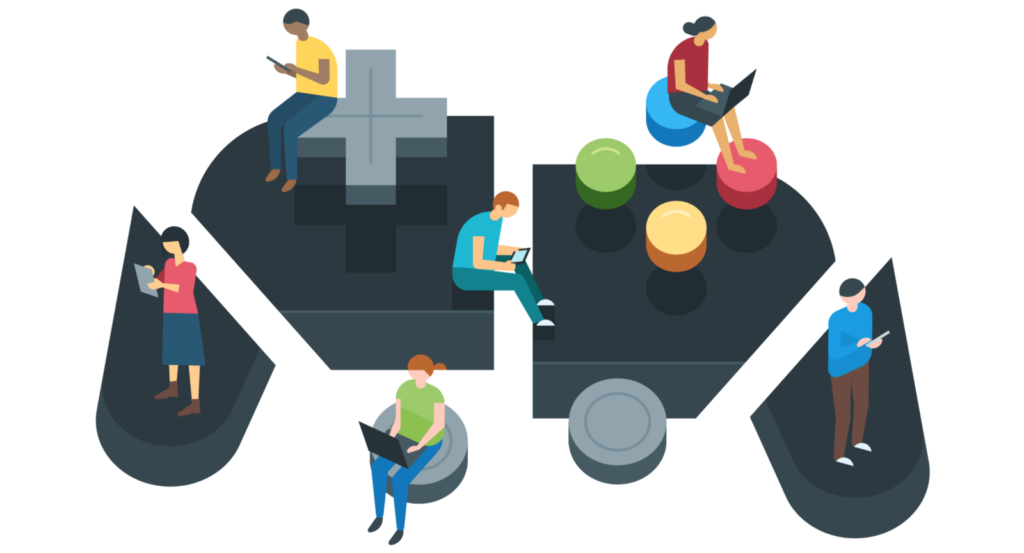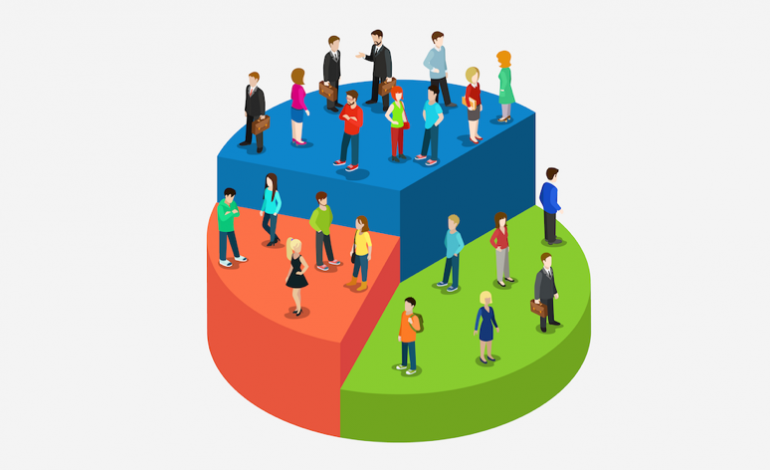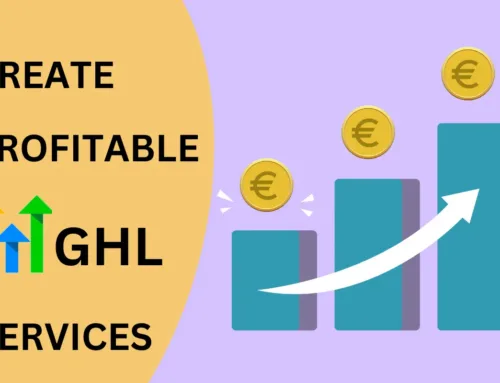A negative experience stays with potential customers longer than a positive one. Statistics given by HubSpot show that 80% of respondents said they had stopped doing business with a company because of a poor customer experience.
While you might not be able to give a smile to your online customers, you can surely make them feel appreciated by being positive and providing them with a unique experience when they get in touch with your brand.
Amazon CEO, Jeff Bezos, almost predicting the importance of customer segmentation, puts it so:
“If you’re competitor-focused, you have to wait until there is a competitor doing something. Being customer-focused allows you to be more pioneering.”
That’s Mr. Bezos, ahead of his time.
Can the eminence of customer segmentation for eCommerce be stressed more?
With over 80% of global consumers indulging in online shopping at least once, online retailers and businesses have a great opportunity for building a long-lasting and profitable relationship with this existing audience. Enhancing such a relationship requires the utmost focus on each and every unique customer, as well as making sense of a flood of real-time information that goes beyond mere demographics or shopping behavior.
What Is Customer Segmentation?
Basically, it is a method of breaking a target market into different segments based on variables ranging from demographics, psychographics, behavior, geographic location, and more. By using such variables, you identify the specific needs of each created segment, further providing them with the products and services that fit them best, ultimately serving each segment better.
When creating an irresistible offer, product or service, it is imperative to know who your customers or users are. Using customer segmentation analysis, online marketers can come up with customized messages, offers, deals and more for each category of customers.
“Don’t find customers for your products, find products for your customers.”
-Seth Godin
Why, as an eCommerce Marketer, Should You Use Customer Segmentation?
It’s simple, really—if you group your customers based on analytics, you can draw plenty of useful consequences. Check out some of them below:
For Higher Conversion Rates
It is natural for a consumer to buy more from brands that actually make them feel special and cherished. The relevance of your marketing campaigns, deals, offers, and even messages is duly noted by users, making them respond to your business much more positively.
While it is tempting to blast your whole customer base with the same message, in the long run it is absolutely of no use. Not only will the response of such campaigns be poor, but also you’ll risk having some of your customers being completely alienated by your brand.
Data segmentation can help personalize the website experience for your visitors. This tailors your branding instead of spreading one mass message. Visitors are more likely to convert if they are offered something they desire. Relevant content leads to happy shoppers and more sales. Moreover, your content should grab consumers’ attention, give massive value and urge them to take quick action.
It provides you with ample possibilities to engage with your customers in a way that translates it into revenue for your business.
To Retain Your Customers for a Lifetime
A quick brainstorming exercise for you: to drive customer retention, should you focus on a deeper understanding of your customer segmentation or take action with the data that you already have?
If you said segment your customer database with greater accuracy, your answer isn’t completely wrong. But we must realize that although acquiring new customers is important, retaining the old ones is equally vital for businesses. So if you already indulge in segmenting your customers and making your marketing campaigns more contextual, you are heading toward an increase in the lifetime value of each customer and driving long-term profitability.
As described already, maintaining existing customers comes to be much cheaper and profitable than acquiring new ones. Also, roughly only 18% of companies today prioritize focusing on customer retention rather than customer acquisition. Both the reasons make customer segmentation nothing but profit and fortune for your business.
Consider these numbers: a study done by Bain & Company found that increasing customer retention efforts by as little as 5% could yield a profit increase of 25% to 95%. Also, while the chances of converting a new lead is 5% to 20%, you will close with a repeat customer 60% to 70% of the time.
This simply is the case because your existing customers already know your brand and have expressed interest in what you have to offer. They’ve already chosen you once; make them more likely to do so again.

To Tailor Existing Products/ Services for New Ones to Come
Visualizing different customer segments and studying the performance of each will provide you with insights imperative for your products or services. By being able to see what works for your business and what doesn’t, you could adjust your strategies accordingly for the future.
In order to optimize effectiveness, marketing should always be tailored to meet the needs of a targeted consumer group. Whilst consistency of brand image is necessary, it is important to remember that the various consumer groups will have specific wants and needs and may prefer to connect with you in different ways.
Adopting a varied approach that is tailored to the segmented groups you are aiming to target is the first step toward ensuring you create a successful marketing campaign.
Perhaps you have product(s) that are not doing any good for your business. Maybe, because you hardly have any margin on them, they only end up bringing you poor quality customers, who do not return or spend. How do you deal with a situation as this? Here’s where segmentation of customers helps you navigate like the beacon in the dark.
As discussed earlier on, it is unquestionably true that maintaining existing customers is way more profitable, easier and cheaper than trying to get new ones. The reason is simple: you are through with the step requiring the most persuasion, which is the first purchase.
Therefore, you can make your products and services tailor-made for unique customers as per their demand.
Why Segmentation Might Not be Working for You
Already using customer segmentation, you say? Janet Choi, Customer.io, explains it this way:
“The most costly segmentation and personalization mistake people make is not taking advantage of their customer’s behavioral data and getting distracted by outdated batch-and-blast methods.”
Let us take a look at some classic mistakes you might be committing while planning and executing behaviorally-targeted campaigns:
Biased decision-making process?
There is always a baggage of biases we carry, but continuing to practice it without realizing your inclination toward a certain predefined concept will never do your business any good.
Are you targeting broad behavioral segments?
The whole point of segmentation is to dive deeper into users’ behavior to be able to target them effectively. Do you think there is any point in having broad behavioral segmentation in which almost everyone fits into?
Are your segments too small?
Holding onto just one main characteristic can lead to lost opportunities. Hence, broadening your segment a bit more can give you better results and also give users a better experience.
Are you relying on static segments?
Outdated data might not only lead you to wrong marketing decisions, but also create an unpleasant user experience. The need to keep your data updated is a must if you want to target correctly.
Some Basic Customer Segments Online Stores Often Use
Being relevant and responding adequately to users’ actions is the basis of personalized marketing. It starts with acknowledging the differences in your customers’ behavior and working with them, not in spite of them.
So how do eCommerce stores generally segment their customers?
High Spenders
Customers in this segment either shop very often or they make large orders. Target them with communications and offers to show appreciation.
Cart Abandoners
This one’s a tough bunch. By using the interest that they have shown on a certain product of yours, you can add related items and give them more options when reaching out to them. You need an order, no matter the product.
Coupon Lovers
You may find customers who solely buy when getting to use a coupon. The idea is not to devalue your products so much with constant promotion while keeping the sales coming from price-sensitive people customers.
One-Timers
Segmenting your customers by the number of orders is a quick and easy way to be able to target accordingly. In order to get them to repeat sales you can up-sell and cross-sell. You could also ask for a review in the first purchase and give a discount on the second.
Idle Customers
Let’s say you set it to customers who haven’t been active on your site in the last two months. You can apply a filter for the last session or last activity to get a list of potential buyers.
Curious Browsers
This particular group is a true opportunity. They are interested and thus should be wooed. You can remarket to them by promoting products they were browsing.
By Location
If you happen to be reaching multiple countries with your business, it’s a good idea to consider customer location when coming up with promotions.
Registered Browsers
If you have registered users who haven’t made a purchase yet, you are wasting the money lying on the table for you. The simplest segmentation is by the number of sessions, the number of orders being zero.
Newsletter Readers/ eBooks Subscribers
If you are investing time and money in content and email marketing, it is natural for you to want to know who actually is reading it. It helps you come up with an idea to include and products to promote.
There Is no eCommerce Without Segmentation
One of the biggest advantages that come with the ecommerce industry is that you can give everyone the most reasonable, personally relevant offer. By segmenting customers, you get detailed analysis about what interests them, how can they be motivated, and how they behave on your site.
With this, you work as if a personal sales assistant has been hired for each of your customers. If you haven’t already done so, it’s still not too late to get going and make the most of it.




